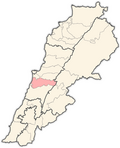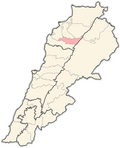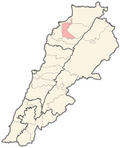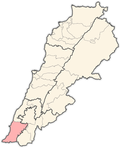
This is a list of cities and towns in Lebanon [1] distributed according to the 26 districts which are split into 9 governorates. There are over 1000 municipalities (cities and towns). 56.21% of the population lives in 19 cities and towns, which gives the average 2,158 people per town.






















